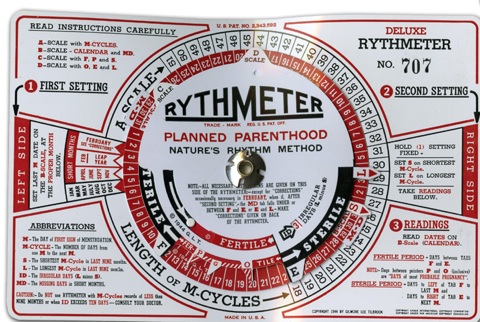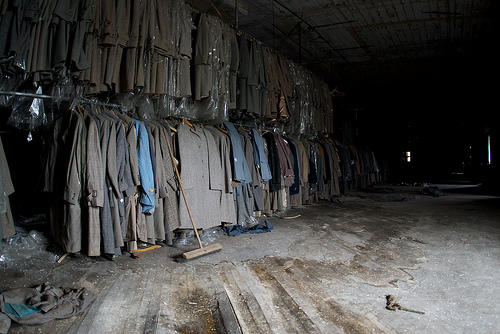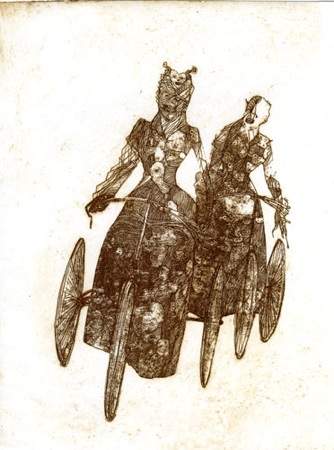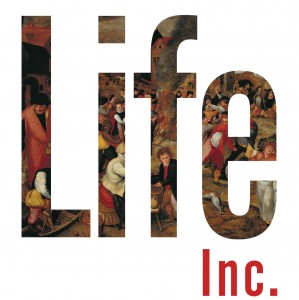The Latest from Boing Boing |  |
| Muppet-themed art based on R. Crumb's "Cheap Thrills" cover Posted: 04 May 2009 11:19 PM PDT  Marc Palm, did a swell job with this muppet themed tribute to R. Crumb's cover for Janis Joplin's "Cheap Thrills" LP. For this show [Muppet Rawk II group show at Ouch My Eye Gallery] artists had to take an existing rock album cover and re-image it with Jim Henson's Muppets. You could use any Muppet and it the art had to be 12" x 12".Cheap Thrills with Muppets Rawk Previously: Drew Friedman paints Robert Crumb presenting Cheap Thrills album cover to Janis Joplin |
| Mia Farrow nine days into three week hunger strike for Darfur Posted: 04 May 2009 11:02 PM PDT  Mia Farrow is on a hunger strike to support Darfur refugees and has been posting videos on her YouTube channel. The LA Times reports that 75 other people so far have pledged on Farrows site to either fast for three weeks or eat the same kind of rations the refugees are eating. Gabriel Stauring, who helped organize the site, expressed concern for Farrow, with whom he said he'd traveled to Darfur last summer. "You’ve seen Mia’s size," he said. "There’s no way she can go that long without doing permanent damage. We want to convince her that if we have somebody else that is famous and that would draw attention, that she should stop." Stauring suggested that more recognizable names might be joining the effort soon.Mia Farrow hits day nine of online hunger strike for Darfur |
| Short vid about small operators who are coping with econopocalypse Posted: 04 May 2009 10:11 PM PDT Howard Rheingold sez, "Aaron Stapley and Sarah Castelblanco made this video (featuring interviews with me, among others) about the way lone wolves and small operators are able to leverage their creative work with tools and methods. The video was originally inspired by this BB post by Cory about how BB readers are coping with the econopocalype." Muscle Up! (Thanks, Howard!) |
| Watchclocks: an early device for controlling users Posted: 04 May 2009 10:08 PM PDT Here's a good explanation of the workings of the "watchclock," a device carried by watchmen in order to allow their employers to check up on their patrolling. It's one of the earliest examples of a sophisticated device intended to control the behavior of its user. Who Watches the Watchman? (via Kottke) |
| Woman accuses cop neighbor of forging "Come get all my stuff for free" ad on Craigslist Posted: 04 May 2009 10:05 PM PDT A woman in Mansfield, TX spent a day chasing off aggressive bargain-hunters who were responding to a Craigslist posting offering her tetherball and and basketball hoop for free. The ad had allegedly been placed by her neighbor, a cop who didn't like having them visible next door. By the end of the day, the bargain-seekers had managed to make off with both. Sherry Johnson Huwitt was standing at her kitchen window in her bathrobe shortly before dawn a couple of weeks ago when two strangers pulled up and started loading the portable basketball goal from the side of her house into a truck.Mansfield woman says Arlington officer offered her possessions on Craigslist without her consent (via Consumerist) |
| Posted: 04 May 2009 10:01 PM PDT Jon Haddock's latest hand-cranked automaton reenacts the infamous "Don't Tase Me Bro" with adorable mechanical figurines. Andrew Meyer (Don't Tase Me Bro) (via Make) Previously: |
| Posted: 04 May 2009 08:04 PM PDT  Mark Kleiman says, Last year U.S. Supreme Court Justice Antonin Scalia gave a public speech questioning the need for more privacy protections. |
| Swine Flu Portraits from Mexico City Posted: 04 May 2009 07:54 PM PDT  Photographs by Nicola "Okin" Frioli: SWINE FLU - MEXICO CITY. (Thanks, Antinous, and anonymous BB commenter) |
| Posted: 04 May 2009 07:29 PM PDT  Here's a link to a new tumblog that collects photos of delicious, healing hospital meals from around the world. (Thanks, Reno!). |
| The Business Model of Somalian Pirates (audio) Posted: 04 May 2009 07:33 PM PDT Above: Somalian Pirates We, Eric "Fatbeard" Cartman's song about how great the pirate biz is (South Park). In related news, NPR contributor Chana Joffe-Walt produced a great piece for Planet Money which analyzes the economic model behind the (real) pirates of Somalia (and other locales.) [I]ssues of criminality and the potential for violence aside, a closer look at the "business model" of piracy reveals that the plan makes economic sense. A piracy operation begins, as with any other start-up business, with venture capital.Listen: PLANET MONEY - Behind The Business Plan Of Pirates Inc. |
| BB Video: Recent Episodes, For Your Viewing Pleasure. Posted: 04 May 2009 02:03 PM PDT Recently on Boing Boing Video... * Revisiting TechShop, as Portland Site Launches (Download MP4). TechShop is an open-access public workshop that's kind of like a health club with heavy machinery and sparks instead of treadmills. They've just opened a new branch in Oregon, so we're revisiting a classic Boing Boing episode we shot on a visit to their flagship location in Silicon Valley. Top Chair? Joel Reviews The Herman Miller Embody and Steelcase Leap (Download MP4). Our Joel from Boing Boing Gadgets test-drive -- literally! -- two office chairs. Tricaster, and the Future of Live Video Online (Download MP4). We review the Tricaster, a compact device that facilitates high-quality live internet video broadcast production for a lot less dough than the equivalent amount of traditional TV production gear. A number of web video productions are now using the Tricaster, including Leo Laporte's TWIT.tv, and Mahalo's newly launched Kevin Pollak chat show. "Manifestations," An Animated Love Story, by Giles Timms (Download MP4). An animated short in which a cartoon critter named Mr. Chip who seeks anime love in a psychedelic, ever-morphing virtual world. The music is by Welsh composer Ceri Frost. RSS feed for new episodes here, YouTube channel here, subscribe on iTunes here. Get Twitter updates every time there's a new ep by following @boingboingvideo, and here are blog post archives for Boing Boing Video. (Special thanks to Boing Boing's video hosting partner Episodic). |
| Posted: 04 May 2009 02:28 PM PDT Disaboom reports on an idiotic bill that would make it a crime to "photograph with 'lascivious intent' a person over the age of 60 or a person with a disability who has been declared mentally incompetent." State Representative Kathi-Anne Reinstein says the bill she sponsored was intended to protect vulnerable populations from sexual predators, but some disability advocates and law buffs have criticized the amendments as restricting the sexual freedom of seniors and people with disabilities.It's idiotic for two reasons -- first, for making it a crime to take a nude photo of a consenting adult (I'm talking about people over the age of 60 who are mentally competent), and second, taking away the ability of people over the age of 60 to do whatever the heck they want to do without interference from the government. Let's hope this bill dies a slow quick, agonizing death. Massachusetts Bill Would Rule People Over 60 and Some People with Disabilities Incapable of Consenting to Erotic Photography |
| Drew Friedman draws Schlitzie the Pin Head Posted: 04 May 2009 01:12 PM PDT  Drew Friedman created this terrifying and terrific portrait of Schlitzie, the Pin Head for a private collector. We accept you! Gooble gobble! We accept you! |
| Posted: 04 May 2009 11:37 AM PDT Over at Orange Crate Art, Michael Leddy quotes this terrific advice from graphic designer Milton Glaser on avoiding toxic people: There is a test to determine whether someone is toxic or nourishing in your relationship with them. Here is the test: You have spent some time with this person, either you have a drink or go for dinner or you go to a ball game. It doesn't matter very much but at the end of that time you observe whether you are more energised or less energised. Whether you are tired or whether you are exhilarated. If you are more tired then you have been poisoned. If you have more energy you have been nourished.Some people are toxic. Avoid them. |
| Chris Reccardi and Lynne Naylor art show Posted: 04 May 2009 11:25 AM PDT   Chris Reccardi and Lynne Naylor have a show of lovely new paintings at David B. Smith Gallery in Denver Colorado. Naylor and Reccardi are both well-respected figures in the animation world. Chris worked on the Ren & Stimpy Show, Powerpuff Girls, and is creating two new pilots for the Cartoon Network. Lynne co-created the Ren & Stimpy Show and was lead character designer for Batman: The Animated Series, Powerpuff Girls, Clone Wars: The Micro-Series, and other programs. The art show, titled "Nature/Nurture," runs until May 23 and is also viewable online. Above left, Reccardi's "mutr 4 ("Mutation") (acrylics on canvas, 18" x 18"). Above right, Naylor's "Hospitality Of A Honeybee" (acrylics on canvas, 14" x 11"). Nature/Nurture Previously: |
| Cube-shaped kitchen appliances could save counter-space Posted: 04 May 2009 10:56 AM PDT James "Bagless Vacuum" Dyson has proposed a new model for kitchen appliances: making everything square, without sticky-outy handles and other lumps and decoration that increase the appliances' footprint. Hilariously, he's applied for a patent on the idea of "make-everything-square." Uh, James? I think White Castle may have some prior art. Their answer, given in patent filing US 2009/0095729, is a simple one: make all free-standing gadgets like kettles, toasters, juicers and food mixers in the shape of tall cuboids that can easily be pushed together on a worktop, with no wasted space between them. As the controls could be recessed in their flat lids or on the front panels, no space-wasting side access is required. The patent also suggests connecting the appliances together - presumably using a common power supply.Cubist kitchen could stem gadget invasion |
| Early devices for "rhythm method" Posted: 04 May 2009 10:45 AM PDT  John C. Rock, a Harvard professor of gynecology, was the co-inventor of the birth control pill and a pioneer of in-vitro fertilization. Harvard's Center for the History of Medicine is holding an exhibition of his papers and artifacts, including two devices to help with "family planning" during a time when the only legal form of birth control in Massachusetts was the rhythm method. Above is "The Rythmeter," circa 1944. "A Pioneer in Family Planning" (via Mother Jones) |
| Photos from abandoned clothing factory Posted: 04 May 2009 10:43 AM PDT  Chris sez, "These photos were taken at the abandoned Lebow Clothing Factory in Baltimore, MD. Lebow Clothing manufactured fine suits and jackets at this factory. This building also housed a consumer outlet store. The site appears to have closed sometime in the 80's, but unfortunately, there isn't much information about why this factory was closed. Now the factory has been warped by the environment and time making for a very eerie (and interesting) location." Lebow Clothing Factory (Thanks, Chris!) Previously:
|
| Prison officer surprised he was fired after zapping children with 50,000-volt stun gun Posted: 04 May 2009 10:52 AM PDT Prison officer Walter Schmidt zapped visiting children with a 50,000-volt stun gun to give them a taste of life in a Florida jail. Two of the kids were knocked screaming to the floor with burns on their arms. One child went to the hospital. "It wasn't intended to be malicious, but educational," said Schmidt. "The big shock came when I got fired." Prison officer zaps children with 50,000-volt stun gun "to show them what a day at work is like" (Via Arbroath) |
| Michael Alan's art and Draw-A-Thon Theater Posted: 04 May 2009 11:45 AM PDT   Draw-A-Thon Theater is figure drawing meets performance art, a monthly New York happening where models are posed in surreal theatrical scenes and attendees are encouraged to draw what they see and experience. Hosted by Michael Alan, Draw-a-Thon Theater was the subject of a recent photo essay in the New York Times. Formerly a graffiti writer, Alan is a pretty amazing artist in his own right, working in mixed media, music, sculpture, and drawing. Seen here is one of my favorite pieces from his site, an etching titled "The Riders." Michael Alan Art (Thanks, Kelly Sparks!) Draw-A-Thon Theater is figure drawing meets performance art, a monthly New York happening where models are posed in surreal theatrical scenes and attendees are encouraged to draw what they see and experience. Hosted by Michael Alan, Draw-a-Thon Theater was the subject of a recent photo essay in the New York Times. Formerly a graffiti writer, Alan is a pretty amazing artist in his own right, working in mixed media, music, sculpture, and drawing. Seen here is one of my favorite pieces from his site, an etching titled "The Riders." Michael Alan Art (Thanks, Kelly Sparks!) |
| Sparks cover of "I Want To Hold Your Hand" Posted: 04 May 2009 10:17 AM PDT Vann Hall sends this 1976 cover of "I Want To Hold Your Hand" by Sparks. (Audio only.) It was recorded for their Big Beat album but didn't make the cut. The track was eventually released as a vinyl single and later as a CD bonus track. From a site about the band: Even though "Big Beat" was going to be a more stripped down album with more guitars and fewer of Ron's keyboards Russell Mael was going to do a lush, orchestral duet version of Lennonn & MacCartney's "I Want To Hold Your Hand" with Marianne Faithfull. Producer Rupert Holmes did syrupy score for the song, yet Marianne Faithfull dropped out of the project at the last minute leaving Rupert Holmes, Jeffrey Lesser and The Maels with a score and no one to sing it. Russell Mael ended up singing the song, yet it seemed so incongruous even for Sparks, that this execrable orchestral assault produced by Jeffrey Lesser never appeared on an album. Link |
| Posted: 04 May 2009 10:05 AM PDT  Becky Stern of Craft wrote about these accident-explanatory slings. Becky Stern of Craft wrote about these accident-explanatory slings. I really could have used one of these after my knee surgery, except it would have had to play video of what the doctor found inside my knee! This would make a great screen printing project if you know someone with a broken arm, or if you're adept at one-armed screen printing. Perhaps these accident-explanatory slings will be an option at hospitals in the future. I'd like to see the "shark attack" or "you should see the other guy" editions; those were my two most common fallback stories while on crutches. |
| Road rage among senior citizens Posted: 04 May 2009 10:01 AM PDT Beecher Davis, 82, was charged with assault for punching Charlie Bruener, 67, in the face, twice, in a moment of road rage in Alexandria, Kentucky. Bruener allegedly called Davis a son-of-a-bitch after Davis cut him off in his car. Davis followed Bruener and his wife to a Wal-Mart parking lot. From WCPO: When they pulled into the Walmart parking lot, Bruener says Davis approached their car."Senior Citizen Arrested For Assault" (Thanks, Charles Pescovitz!) Previously: |
| Posted: 04 May 2009 09:44 AM PDT A court in Sweden denied artist Carlos Bebeacua attempted registration of his Madonna of Orgasm Church as a religious organization. From UPI: Bebeacua has said the church is aimed at encouraging people to worship the orgasm as God. "The orgasm is God, the orgasm should be worshiped," Bebeacua said. "The orgasm is the ultimate feeling of lust, it shouldn't be limited to ejaculation. You can reach it through art or by looking at a landscape and thinking 'Wow!'"Freedom of Religion Suffers Terrible Blow in Sweden |
| Video teaser for new book: The Inside Story of the Process Church Posted: 04 May 2009 09:54 AM PDT The Process Church of the Final Judgment was an odd, dark religious group that formed in the 1960s, gaining attention through celebrity associates like Marianne Faithful, Mick Jagger, and Funkaedelic. In the next month or so, Feral House will release a book about the strange cult, "Love, Sex, Fear, Death: The Inside Story of The Process Church of the Final Judgment," written by former member Timothy Wyllie, and fringe culture chronicler Adam Parfrey. Adam emailed me, "What's amazing is that the true story stunned me, and goes against the usual press, conspiratorial or not, about the group. Genesis P-Orridge assisted a great deal in the creation of this book, and he contributed an excellent piece about how The Process Church affected the creation of The Temple ov Psychick Youth (TOPY). William Morrison of Skinny Puppy put this teaser together. He's also working on a full-length feature documentary about The Process." Love, Sex, Fear, Death: The Inside Story of The Process Church of the Final Judgment |
| Captain and Mrs. Hook's LP of music for Christian pirate children Posted: 04 May 2009 09:41 AM PDT  We have Schadenfreudian Therapy to thank for digitizing this LP of Christian pirate music for children. This album is chock-full of piping childen’s voices singing about being Christian pirates and long-winded sermons about not spending all your money at the proverbial circus and missing the train to Heavenville and such. The best part is a surly puppet sidekick "Sharkey" who likes to refer to the good Cap’n as “fatso” and is guilty of the eighth and ninth deadly sins of interrupting and backtalking. |
| Posted: 04 May 2009 09:41 AM PDT In Lincoln Park, Calif. Michigan, a 17-year-old called 911 when her father (recovering at home from brain surgery) had a seizure. Her first call didn't go through, so the panicked girl hung up and tried again. While the phone was still ringing, the girl said "what the fuck." Apparently 911 calls are recorded even while the phone is ringing, so the police officer heard her say it. When the officer answered the call, he was only interested in the fact that the girl said "fuck" and wouldn't help the girl. Instead, he swears at her and hangs up. After the girl places several more calls to 911 trying to explain that her father was about to die, the officer finally called the fire department with a fabricated version of what happened. Eventually, the girl gets arrested and jailed by the police for a crime that isn't on the books. (via The Agitator) |
| Posted: 04 May 2009 12:07 PM PDT  (Author Douglas Rushkoff is a Boing Boing guestblogger.) I'm going to be posting most or perhaps all of my upcoming book, Life Inc: How the world became a corporation and how to take it back, over the next two weeks. I'll put the beginning of each excerpt here, along with a link to where you can read or download the rest. So, let's start at the beginning. Life Inc (Amazon) Your Money or Your Life: A Lesson on the Front Stoop I got mugged on Christmas Eve. I was in front of my Brooklyn apartment house taking out the trash when a man pulled a gun and told me to empty my pockets. I gave him my money, wallet, and cell phone. But then--remembering something I'd seen in a movie about a hostage negotiator--I begged him to let me keep my medical insurance card. If I could humanize myself in his perception, I figured, he'd be less likely to kill me. He accepted my argument about how hard it would be for me to get "care" without it, and handed me back the card. Now it was us two against the establishment, and we made something of a deal: in exchange for his mercy, I wasn't to report him--even though I had plainly seen his face. I agreed, and he ran off down the street. I foolishly but steadfastly stood by my side of the bargain, however coerced it may have been, for a few hours. As if I could have actually entered into a binding contract at gunpoint. In the meantime, I posted a note about my strange and frightening experience to the Park Slope Parents list--a rather crunchy Internet community of moms, food co-op members, and other leftie types ded- icated to the health and well- being of their families and their decidedly progressive, gentrifying neighborhood. It seemed the responsible thing to do, and I suppose I also expected some expression of sympathy and support. Amazingly, the very first two emails I received were from people angry that I had posted the name of the street on which the crime had occurred. Didn't I realize that this publicity could adversely affect all of our property values? The "sellers' market" was already difficult enough! With a famous actor reportedly leaving the area for Manhattan, does Brooklyn's real estate market need more bad press? And this was beforethe real estate crash. I was stunned. Had it really come to this? Did people care more about the market value of their neighborhood than what was actually taking place within it? Besides, it didn't even make good business sense to bury the issue. In the long run, an open and honest conversation about crime and how to prevent it should make the neighborhood safer. Property values would go up in the end, not down. So these homeowners were more concerned about the immediate liquidity of their town houses than their long-term asset value -- not to mention the actual experience of living in them. And these were among the wealthiest people in New York, who shouldn't have to be worrying about such things. What had happened to make them behave this way? (...post continues after the jump) It stopped me cold, and forced me to reassess my own long-held desire to elevate myself from renter to owner. I stopped to think-- which, in the midst of an irrational real-estate craze, may not have been the safest thing to do. Why, I wondered aloud on my blog, was I struggling to make $4,500-per-month rent on a two- bedroom, fourth- floor walk-up in this supposedly "hip" section of Brooklyn, when I could just as easily get mugged somewhere else for a lot less per month? Was my willingness to participate in this runaway market part of the problem? The detectives who took my report drove the point home. One of them drew a circle on a map of Brooklyn. "Inside this circle is where the rich white people from Manhattan are moving. That's the target area. Hunting ground. Think about it from your mugger's point of view: quiet, tree-lined streets of row houses, each worth a million or two, and inhabited by the rich people who displaced your family. Now, you live in or around the projects just outside the circle. Where would you go to mug someone?" Back on the World Wide Web, a friend of mine--another Park Slope writer--made an open appeal for my family to stay in Brooklyn. He saw "the Slope" as a mixed-use neighborhood now reaching the "peak of livability" that the legendary urban anthropologist Jane Jacobs idealized. He explained how all great neighborhoods go through the same basic process: Some artists move into the only area they can afford--a poor area with nothing to speak of. Eventually, there are enough of them to open a gallery. People start coming to the gallery in the evenings, creating demand for a coffeehouse nearby, and so on. Slowly but surely, an artsy store or two and a clique of hipsters "pioneer" the neighborhood until there's significant sidewalk activity late into the night, making it safer for successive waves of incoming businesses and residents. Of course, after the city's newspaper "discovers" the new trendy neighborhood, the artists are joined and eventually replaced by increasingly wealthy but decidedly less hip young professionals, lawyers, and businesspeople--but hopefully not so many that the district completely loses its "flavor." Investment increases, the district grows bigger, and everyone is happier and wealthier. Still, what happens to the people who lived there from the beginning--the ones whom the police detective was talking about? The "natives"? This process of gentrification does not occur ex nihilo. No, when property values go up, so do the rents, displacing anyone whose monthly living charges aren't regulated by the government. The residents of the neighborhood do not actually participate in the renaissance, because they are not owners. They move to outlying areas. Sure, their kids still go to John Jay High School in the middle of Park Slope. But none of Park Slope's own wealthy residents send their kids there. Our online conversation was picked up by New York magazine in a column entitled "Are the Writers Leaving Brooklyn?" The article fo- cused entirely on the way a crime against an author could threaten the Brooklyn real- estate bubble. National Public Radio called to interview me about the story--not the mugging itself, but whether I would leave Brooklyn over it, and if doing so publicly might not be irresponsibly hurting other people's property values. A week or two of blog insanity later, a second New York piece asked why we should even care about whether the writers are leaving Brooklyn--seemingly oblivious of the fact that this was the very same column space that told us to care in the first place. It was an interesting fifteen minutes. What was going on had less to do with crime or authors, though, than it did with a market in its final, most vaporous phase. I simply couldn't afford to buy in--and getting mugged freed me from the hype treadmill for long enough to accept it. Or, more accurately, it's not that I couldn't afford it so much as that I wouldn't afford it. There were mortgage brokers willing to lend me the other 90 percent of the money I'd need to purchase a home on the block where I was renting. "We can get you in," they'd say. And at that moment in real estate history, putting even 10 percent down would have made me a very qualified buyer. "What about when the mortgage readjusts?" I remember asking. "Then you refinance at a better rate," they assured me. Of course, that would be happening just about the same time Park Slope's artificially low property- tax rate (an exemption secured by real- estate developers) would be raised to the levels of the poorer areas of the borough. "Don't worry. Everyone with your financials is doing it," one broker explained with a wink. "And the banks aren't going to just let everyone lose their homes, now, are they?" As long as people refused to look at the real social and financial costs, the market could keep going up--buoyed in part by the bonuses paid to investment bankers whose job it was to promote all this asset inflation in the first place. Heck, we were restoring a historic borough to its former glory. All we had to do was avoid the uncomfortable truth that we were busy converting what were being used as multifamily dwellings by poor black and Hispanic people back into stately town houses for use by rich white ones. And we had to overlook that this frenzy of real- estate activity was operating on borrowed time and, more significantly, borrowed money. In such a climate, calling attention to any of this was the real crime, and the reason that the first reaction of those participating in a speculative bubble was to silence the messenger. It's just business. The reality was that we were pushing an increasingly hostile population from their homes, colonizing their neighborhoods, and then justifying it all with metrics such as increased business activity, reduced (reported) crime rates, and--most important--higher real- estate prices. How can one argue against making a neighborhood, well, better? As my writer friend eloquently explained on his blog, the neighborhood was now, by most measures, safer. It was once again possible to sit on one's stoop with the kids and eat frozen Italian ices on a balmy summer night. One could walk through Prospect Park on any Sunday afternoon and see a black family barbecuing here, a Puerto Rican group there, and an Irish group over there. Compared with most parts of the world, that's pretty civil, no? Romantic as it sounds, that's not integration at all, but co-location. Epcot- style détente. The Brooklyn being described here has almost nothing to do with the one our grandparents might have inhabited. It is rather an expensive and painstakingly re-created simulation of a "brownstone Brooklyn" that never actually existed. If people once sat on their stoops eating ices on summer nights it was because they had no other choice--there was no air- conditioning and no TV. Everyone could afford to sit around, so everyone did. And the fact that the denizens of neighboring communities complete the illusion of multiculturalism by using the same park only means that these folks are willing to barbecue next to each other--not with each other. They all still go home to different corners of the borough. My writer friend's kids go off the next morning to their private school, those other kids to public. Not exactly neighbors. Besides, the rows of brownstones in the Slope aren't really made of brown stone. They've been covered with a substance more akin to stucco--a thick paint used to create the illusion of brown stones set atop one another. A façade's façade. As any brownstone owner soon learns, the underlying cinder blocks can be hidden for only so long be- fore a costly "renovation" must be undertaken to cover them up again. Likewise, wealth, media, and metrics can insulate colonizers from the reality of their situation for only so long. Eventually, parents who push their toddlers around in thousand- dollar strollers, whose lifestyles and values have been reinforced by a multibillion-dollar industry dedicated to hip child- rearing, get pelted with stones by kids from the "projects." (Rest assured--the person who reported this recurring episode at a gentrified Brooklyn playground met with his share of on- line derision, as well.) Like Californians surprised when a wildfire or coyote disrupts the "natural" lifestyle they imagined they'd enjoy out in the country, we "pioneer," "colonize," and "gentrify" at our peril, utterly oblivious to the social costs of our expansion until one comes back to bite us in the ass--or mug us on the stoop. And while it's easy to blame the larger institutions and social trends leading us into these traps, our own choices and behaviors--however influenced--are ultimately responsible for whatever befalls us. Park Slope, Brooklyn, is just a microcosm of the slippery slope upon which so many of us are finding ourselves these days. We live in a landscape tilted toward a set of behaviors and a way of making choices that go against our own better judgment, as well as our collective self- interest. Instead of collaborating with each other to ensure the best prospects for us all, we pursue short- term advantages over seemingly fixed resources through which we can compete more effectively against one another. In short, instead of acting like people, we act like corporations. When faced with a local mugging, the community of Park Slope first thought to protect its brand instead of its people. The financial meltdown may not be punishment for our sins, but it is at least in part the result of our widespread obsession with financial value over values of any other sort. We disconnected ourselves from what matters to us, and grew dependent on a business scheme that was never intended to serve us as people. But by adopting the ethos of this speculative, abstract economic model as our own, we have disabled the mechanisms through which we might address and correct the collapse of the real economy operating alongside it. Even now, as we attempt to dig ourselves out of a financial mess caused in large part by this very mentality and behavior, we turn to the corporate sphere, its central banks, and shortsighted metrics to gauge our progress back to health. It's as if we believe we'll find the answer in the stream of trades and futures on one of the cable- TV finance channels instead of out in the physical world. Our real investment in the fabric of our neighborhoods and our quality of life takes a backseat to asking prices for houses like our own in the newspaper's misnamed "real estate" section. We look to the Dow Jones average as if it were the one true vital sign of our society's health, and the exchange rate of our currency as a measure of our wealth as a nation or worth as a people. This, in turn, only distracts us further from the real- world ideas and activities through which we might actually re-create some value ourselves. Instead of fixing the problem, and reclaiming our ability to generate wealth directly with one another, we seek to prop up institutions whose very purpose remains to usurp this ability from us. We try to repair our economy by bolstering the same institutions that sapped it. In the very best years, corporatism worked by extracting value from the periphery and redirecting it to the center--away from people and toward corporate monopolies. Now, even though that wellspring of prosperity has run dry, we continue to dig deeper into the ground for resources to keep the errant system running. So as our corporations crumble, taking our jobs with them, we bail them out to preserve our prospects for employment--knowing full well that their business models are unsustainable. As banks' credit schemes fail, we authorize our treasuries to print more money on their behalf, at our own expense and that of our children. We then get to borrow this money back from them, at interest. We know of no other way. Having for too long outsourced our own savings and investing to Wall Street, we are clueless about how to invest in the real world of people and things. We identify with the plight of abstract corporations more than that of flesh-and-blood human beings. We engage with corporations as role models and saviors, while we engage with our fellow humans as competitors to be beaten or resources to be exploited. Indeed, the now- stalled gentrification of Brooklyn had a good deal in common with colonial exploitation. Of course, the whole thing was done with more circumspection, with more tact. The borough's gentrifiers steered away from explicitly racist justifications for their actions, but nevertheless demonstrated the colonizer's underlying agenda: instead of "chartered corporations" pioneering and subjugating an uncharted region of the world, it was hipsters, entrepreneurs, and real- estate speculators subjugating an undesirable neighborhood. The local economy--at least as measured in gross product--boomed, but the indigenous population simply became servants (grocery cashiers and nannies) to the new residents. And like the expansion of colonial empires, this pursuit of home ownership was perpetuated by a pioneer spirit of progress and personal freedom. The ideal of home ownership was the fruit of a public- relations strategy crafted after World War II--corporate and government leaders alike believed that home owners would have more of a stake in an expanding economy and greater allegiance to free- market values than renters. Functionally, though, it led to a self- perpetuating cycle: The more that wealthier white people retreated to the enclaves prepared for them, the poorer the areas they were leaving became, and the more justified they felt in leaving. While the first real wave of "white flight" was from the cities to the suburbs, the more recent, camouflaged version has been from the suburbs back into the expensive cities. Of course, these upper- middle- class migrants were themselves the targets of the mortgage industry, whose clever lending instruments mirror World Bank policies for their exploitative potential. The World Bank's loans come with "open markets" policies attached that ultimately surrender indebted nations and their resources to the con- trol of distant corporations. The mortgage banker, likewise, kindly provides instruments that get a person into a home, then disappears when the rates rise through the roof, having packaged and sold off the borrower's ballooning obligation to the highest bidder. The benefits to society are pure mythology. Whether it's Brooklynites convinced they are promoting multiculturalism or corporations intent on extending the benefits of the free market to all the world's souls, neither activity leads to broader participation in the expansion of wealth--even when they're working as they're supposed to. Contrary to most economists' expectations, both local and global speculation only exacerbate wealth divisions. Wealthy parents send their kids to private schools and let the public ones decay, while wealthy nations export their environmental waste to the Third World or, better, simply keep their factories there to begin with--and keep their image at home as green as AstroTurf. People I respect--my own mentors and teachers--tell me that this is just the way things are. This is the real world of adults--not so very far removed, we must remember, from the days when a neighboring tribe might just wipe you out--killing your men with clubs and taking your women. Be thankful for the civility we've got, keep your head down, and try not to think too much about it. These cycles are built into the economy; eventually, the markets will recover and things will get back to normal--and normal isn't so bad, really, if you look around the world at the way other people are living. And you shouldn't even feel so guilty about that--after all, Google is doing some good things and Bill Gates is giving a lot of money to kids in Africa. Somehow, though, for many of us, that's not enough. We are fast approaching a societal norm where we--as nations, organizations, and individuals--engage in behaviors that are destructive to our own and everyone else's welfare. The only corporate violations worth punish- ing anymore are those against the shareholders. The "criminal mind" is now defined as anyone who breaks laws for a reason other than money. The status quo is selfishness, and the toxically wealthy are our new heroes because only they seem capable of fully insulating them- selves from the effects of their own actions. Every day, we negotiate the slope to the best of our ability. Still, we fail to measure up to the people we'd like to be, and succumb to the tilt of the landscape. Jennifer has lived in the same town in central Minnesota her whole life. This year, diagnosed with a form of lupus, she began purchasing medication through Wal-Mart instead of through Marcus, her local druggist--who also happens to be her neighbor. Prescription drugs aren't on her health plan, and this is just an economic necessity. Why can't the druggist cut his neighbor a break? He's trying, but he's selling at a mere hair above cost as it is. He just took out a loan against the business to make expenses and his increased rent. The downtown area he's located in has been slated for redevelopment, and only corporate chain stores appear to have deep enough pockets to pay for storefront leases. It sounded like a good idea when Marcus supported it at the public hearing--but the description in the pamphlet prepared by the real estate developer (complete with a section on how to compete more effectively with "big box" stores like Wal- Mart) hasn't conformed to reality. Marcus's landlord doesn't really have any choice in the matter. He underwent costly renovations to conform to the new downtown building code, and needs to pass those on to the businesses renting from him. He took out a mortgage, too, which is slated to reset in just a couple of months. If he doesn't collect higher rents, he won't make payments. Jennifer stopped going to PTA meetings because she's embarrassed to look Marcus in the face. As their friendship declines, so does her guilt about helping put him out of business. Across the country in New Jersey, Carla, a telephone associate for one of the top three HMO plans in the United States, talks to people like Jennifer every day. Carla is paid a salary as well as a monthly bonus based on the number of claims she can "retire" without payment. Without resorting to fraud, Carla is supposed to discourage false claims by making all claims harder to register, in general. That's how Carla's supervisor explained it to her when she asked, point- blank, if she was supposed to mislead customers. She feels bad about it, but Carla is now the principal breadwinner in her family, her husband having lost a lot of his contracting work to the stalled market for new homes. And, in the end, she is preventing fraud. How does Carla sleep at night, knowing that she has spent her day persuading people to pay for services for which they are actually covered? After seeing a commercial on TV, she switched from Ambien to Lunesta. One of the guys working on that very ad campaign, an old co-worker of mine, ended up specializing in health- care advertising because nobody was hiring in the environmental area back in the '90s. Besides, he told me, only half kidding, "at least medical advertising puts the consumer in charge of her own health care." He's conflicted about pushing drugs on TV because he knows full well that these ads encourage patients to pressure doctors to write prescriptions that go against their better judgment. Still, Tom makes up for any compromise of his values at work with a staunch advocacy of good values at home. He recycles paper, glass, and metal, brought his kids to see An Inconvenient Truth, and even uses a compost heap in the backyard for household waste. Last year, though, he finally broke down and bought an SUV. Why? "Everybody else on the highway is driving them," he explained. "It's an automotive arms race." If he stayed in his Civic, he'd be putting them all at risk. "You see the way those people drive? I'm scared for my family." As penance, at least until gas prices went up, he began purchasing a few "carbon offsets"--a way of donating money to environmental companies in compensation for one's own excess carbon emissions. In a similar balancing act, a self- described "holistic" parent in Manhattan spares her son the risks she associates with vaccinations for childhood diseases. "We still don't know what's in them," she says, "and if everyone else is vaccinated he won't catch these things, any- way." She understands that the vaccines required for incoming school pupils are really meant to quell epidemics; they are more for the health of the "herd" than for any individual child. She also believes that mandatory vaccinations are more a result of pharmaceutical in- dustry lobbying than any comprehensive medical studies. In order to meet the "philosophical exemption" requirements demanded by the state, she managed to extract a letter from her rabbi. Meanwhile, in an unacknowledged quid pro quo, she installed a phone line in the rabbi's name in the basement of her town house; he uses the bill to falsify res- idence records and send his sons to the well- rated public elementary school in her high- rent district instead of the 90 percent minority school in his own. At least he can say he's kept them in "the public system." Incapable of securing a legal or illegal zoning variance of this sort, a college friend of mine, now a state school administrator in Brighton, En gland, just made what he calls "the hardest decision of my life," to send his own kids to a private Catholic day school. He doesn't even particularly want his kids to be indoctrinated into Catholicism, but it's the only alternative to the eroding government school he can af- ford. He knows his withdrawal from public education only removes three more "good kids" and one potentially active parent from the system, but doesn't want his children to be "sacrificed on the altar" of his good intentions. So it's not just a case of hip, hypergentrified Brooklynites succumb- ing to market psychology, but people of all social classes making choices that go against their better judgment because they believe it's really the only sensible way to act under the circumstances. It's as if the world itself were tilted, pushing us toward self- interested, short- term decisions, made more in the manner of corporate share- holders than members of a society. The more decisions we make in this way, the more we contribute to the very conditions leading to this awfully sloped landscape. In a dehumanizing and self-denying cycle, we make too many choices that--all things being equal--we'd prefer not to make. But all things are not equal. These choices are not even occur- ring in the real world. They are the false choices of an artificial landscape--one in which our decision-making is as coerced as that of a person getting mugged. Only we've forgotten that our choices are being made under painstakingly manufactured duress. We think this is just the way things are. The price of doing business. Since when is life determined by that axiom? Unquestionably but seemingly inexplicably, we have come to oper- ate in a world where the market and its logic have insinuated them- selves into every area of our lives. From erection to conception, school admission to finding a spouse, there are products and professionals to fill in where family and community have failed us. Commercials en- treat us to think and care for ourselves, but to do so by choosing a corporation through which to exercise all this autonomy. Sometimes it feels as if there's just not enough air in the room--as if there were a corporate agenda guiding all human activity. At a moment's notice, any dinner party can slide invisibly into a stock pro- motion, a networking event, or an impromptu consultation--let me pick your brain. Is this why I was invited in the first place? Through sponsored word- of-mouth known as "buzz marketing," our personal social interactions become the promotional opportunities through which brands strive to be cults and religions strive to become brands. It goes deeper than that second Starbucks opening on the same town's Main Street or the radio ads for McDonald's playing through what used to be emergency speakers in our public school buses. It's not a matter of how early Christmas ads start each year, how many people get trampled at Black Friday sales, or even the news report blaming the fate of the entire economy on consumers' slow holiday spending. It's more a matter of not being able to tell the difference between the ads and the content at all. It's as if both were designed to be that way. The line between fiction and reality, friend and marketer, community and shopping center, has gotten blurred. Was that a news report, reality TV, or a sponsored segment? This fundamental blurring of real life with its commercial counterpart is not a mere question of aesthetics, however much we may dislike mini- malls and superstores. It's more of a nagging sense that something has gone awry--something even more fundamentally wrong than the credit crisis and its aftermath--yet we're too immersed in its effects to do anything about it, or even to see it. We are deep in the thrall of a system that no one really likes, no one remembers asking for, yet no one can escape. It just is. And as it begins to collapse around us, we work to prop it up by any means necessary, so incapable are we of imagining an alternative. The minute it seems as if we can put our finger on what's happening to us or how it came to be this way, the insight disappears, drowned out by the more immediately pressing demands by everyone and everything on our attention. What did they just say? What does that mean for my retirement account? Wait--my phone is vibrating. Can the hermetically sealed food court in which we now subsist even be beheld from within? Perhaps not in its totality--but its development can be chronicled, and its effects can be parsed and understood. Just as we once evolved from subjects into citizens, we have now devolved from citizens into consumers. Our communities have been reduced to affinity groups, and any vestige of civic engagement or neighborly goodwill has been replaced by self- interested goals manufactured for us by our corporations and their PR firms. We've surrendered true participation for the myth of consumer choice or, even more pathetically, that of shareholder rights. That's why it has become fashionable, cathartic, and to some extent useful for the defenders of civil society to rail against the corporations that seem to have conquered our civilization. As searing new books and documentaries about the crimes of corporations show us, the corporation is itself a sociopathic entity, created for the purpose of generating wealth and expanding its reach by any means necessary. A corporation has no use for ethics, except for their potential impact on public relations and brand image. In fact, as many on the side of the environment, labor, and the Left like to point out, corporate managers can be sued for taking any action, however ethical, if it compromises their ultimate fiduciary responsibility to share price. As corporations gain ever more control over our economy, government, and culture, it is only natural for us to blame them for the helplessness we now feel over the direction of our personal and collective destinies. But it is both too easy and utterly futile to point the finger of blame at corporations or the robber barons at their helms--not even those handcuffed CEOs gracing the cover of the business section. Not even mortgage brokers, credit- card executives, or the Fed. This state of affairs isn't being entirely orchestrated from the top of a glass building by an élite group of bankers and businessmen, however much everyone would like to think so--themselves included. And while the growth of corporations and a preponderance of corporate activity have allowed them to permeate most every aspect of our awareness and activity, these entities are not solely responsible for the predicament in which we have found ourselves. Rather, it is corporatism itself: a logic we have internalized into our very being, a lens through which we view the world around us, and an ethos with which we justify our behaviors. Making matters worse, we accept its dominance over us as preexisting--as a given circumstance of the human condition. It just is. But it isn't. Corporatism didn't evolve naturally. The landscape on which we are living--the operating system on which we are now running our social software--was invented by people, sold to us as a better way of life, supported by myths, and ultimately allowed to develop into a self- sustaining reality. It is a map that has replaced the territory. Its basic laws were set in motion as far back as the Renaissance; it was accelerated by the Industrial Age; and it was sold to us as a better way of life by a determined generation of corporate leaders who believed they had our best interests at heart and who ultimately succeeded in their dream of controlling the masses from above. We have succumbed to an ideology that has the same intellectual underpinnings and assumptions about human nature as--dare we say it--mid- twentieth-century fascism. Given how the word has been misapplied to everyone from police officers to communists, we might best refrain from resorting to what has become a feature of cheap polemic. But in this case it's accurate, and that we're forced to dance around this "F word" today would certainly have pleased Goebbels greatly. The current situation resembles the managed capitalism of Mussolini's Italy, in particular. It shares a common intellectual heritage (in disappointed progressives who wanted to order society on a scientific understanding of human nature), the same political alliance (the collaboration of the state and the corporate sector), and some of the same techniques for securing consent (through public relations and propaganda). Above all, it shares with fascism the same deep suspicion of free humans. And, as with any absolutist narrative, calling attention to the inherent injustice and destructiveness of the system is understood as an attempt to undermine our collective welfare. The whistleblower is worse than just a spoilsport; he is an enemy of the people. Unlike Europe's fascist dictatorships, this state of affairs came about rather bloodlessly--at least on the domestic front. Indeed, the real lesson of the twentieth century is that the battle for total social control would be waged and won not through war and overt repression, but through culture and commerce. Instead of depending on a paternal dictator or nationalist ideology, today's system of control depends on a society fastidiously cultivated to see the corporation and its logic as central to its welfare, value, and very identity. That's why it's no longer Big Brother who should frighten us-- however much corporate lobbies still seek to vilify anything to do with government beyond their own bailouts. Sure, democracy may be the quaint artifact of an earlier era, but what has taken its place? Suspension of habeas corpus, surveillance of citizens, and the occasional repression of voting notwithstanding, this mess is not the fault of a particular administration or political party, but of a culture, economy, and belief system that places market priorities above life itself. It's not the fault of a government or a corporation, the news media or the entertainment industry, but the merging of all these entities into a single, highly centralized authority with the ability to write laws, issue money, and promote its expansion into our world. Then, in a last cynical surrender to the logic of corporatism, we assume the posture and behaviors of corporations in the hope of restoring our lost agency and security. But the vehicles to which we gain access in this way are always just retail facsimiles of the real ones. Instead of becoming true landowners we become mortgage holders. Instead of guiding corporate activity we become shareholders. Instead of directing the shape of public discourse we pay to blog. We can't compete against corporations on a playing field that was created for their benefit alone. This is the landscape of corporatism: a world not merely dominated by corporations, but one inhabited by people who have internalized corporate values as our own. And even now that corporations appear to be waning in their power, they are dragging us down with them; we seem utterly incapable of lifting ourselves out of their de- pression. We need to understand how this happened--how we came to live for and through a business scheme. We must recount the story of how life itself became corporatized, and figure out what --if anything-- we are to do about it. While we will find characters to blame for one thing or another, most of corporatism's architects have long since left the building-- and even they were usually acting with only their immediate, short-term profits in mind. Our object instead should be to understand the process by which we were disconnected from the real world and why we remain disconnected from it. This is our best hope of regaining some relationship with terra firma again. Like recovering cult victims, we have less to gain from blaming our seducers than from understanding our own participation in building and maintaining a corporatist society. Only then can we begin dismantling and replacing it with something more livable and sustainable. |
| Posted: 04 May 2009 06:51 AM PDT  Recently on Offworld, guest blogger Tom Armitage counters developer claims that X-Men Origins: Wolverine is "the movie game that finally, does not suck" with a lengthy look at 2004 Xbox hit The Chronicles of Riddick: Escape From Butcher Bay, freshly revamped for the Xbox 360, and his weekend game of choice. Elsewhere we saw more Spore for the iPhone, this time a free, open-source third-party creature browser built on top of Maxis' Spore API, the latest 'feelgood' trailer for Brütal Legend, Double Fine's Jack-Black-starring 3D adventure through the Age of Rock, and the first video of Gaijin's latest retro-futurist WiiWare game, the more rotely rhythmic Bit.Trip: Core. We also saw Sony adding more demoscene legends to its PlayStation Network downloadables, as .produkkt, creators of 96k first-person-shooter .kkreiger, unveil their elephant-headed, glistening dolphin, faux-Domo-kun starring .deTuned (above). Indie auteur Cactus also showed off the first geometric platforming of his "game about killing everything you love," and Earthbound got its first custom vinyl toys. Finally, the day's quick-hit 'one shot's: seeing Super Mario from Mario's perspective, a peek and poke into the aged sketchbook and design documents of an Atari 800XL/LE programmer, Katamari Damacy meets Shadow of the Colossus, and Princess Peach falls down the Dig Dug hole. Recently on Offworld, guest blogger Tom Armitage counters developer claims that X-Men Origins: Wolverine is "the movie game that finally, does not suck" with a lengthy look at 2004 Xbox hit The Chronicles of Riddick: Escape From Butcher Bay, freshly revamped for the Xbox 360, and his weekend game of choice. Elsewhere we saw more Spore for the iPhone, this time a free, open-source third-party creature browser built on top of Maxis' Spore API, the latest 'feelgood' trailer for Brütal Legend, Double Fine's Jack-Black-starring 3D adventure through the Age of Rock, and the first video of Gaijin's latest retro-futurist WiiWare game, the more rotely rhythmic Bit.Trip: Core. We also saw Sony adding more demoscene legends to its PlayStation Network downloadables, as .produkkt, creators of 96k first-person-shooter .kkreiger, unveil their elephant-headed, glistening dolphin, faux-Domo-kun starring .deTuned (above). Indie auteur Cactus also showed off the first geometric platforming of his "game about killing everything you love," and Earthbound got its first custom vinyl toys. Finally, the day's quick-hit 'one shot's: seeing Super Mario from Mario's perspective, a peek and poke into the aged sketchbook and design documents of an Atari 800XL/LE programmer, Katamari Damacy meets Shadow of the Colossus, and Princess Peach falls down the Dig Dug hole. |
| Supermen! The potent, primitive four-color heroes of 1936-41 Posted: 01 May 2009 08:03 AM PDT  Greg Sadowski's anthology Supermen!: The First Wave Of Comic Book Heroes 1939-41 pulls together some of the goofiest, most innocent, most violent superhero comics ever penned, excavating rarities from the dawn of the genre when small studios set out to reinvent pulp literature in four colors. These are heroes from an era of cheerful immorality, when masked heroes like The Clock (apparently the first masked hero) maintained secret identities as "a small time dip and drug addict;" when Yarko, Master of Magic, kidnapped evil hags and took them to hell (beating the hell out of any demons he encounters on the way) so that she can bargain with Satan to restore the girl she killed in a jealous fit; when Fletcher Hanks's demented, idiotic hero Stardust and heroine Fantomah (the first woman super-hero) fought evil with nonsequiturs and a remarkable lack of anatomical accuracy; and when a hero called "The Face" fought crime by donning a fright mask that terrified villains into confessing their bad deeds on the spot. The forematter (a lovely, insightful, nostalgic essay by Jonathan Lethem) and the afterword (a collection of bibliographic and historical notes on each strip) make perfect bookends for the hot stuff in the middle. This is pure and unadulterated Id, the kind of thing that inspired a moral panic about the corruption of the young. It's every bit as potent today. Supermen!: The First Wave Of Comic Book Heroes 1939-41 Previously:
|
| You are subscribed to email updates from Boing Boing To stop receiving these emails, you may unsubscribe now. | Email delivery powered by Google |
| Inbox too full? | |
| If you prefer to unsubscribe via postal mail, write to: Boing Boing, c/o Google, 20 W Kinzie, Chicago IL USA 60610 | |
 The key, literally, to the watchclock system is that the watchman is required to "clock in" at a series of perhaps a dozen or more checkpoints throughout the premises. Positioned at each checkpoint is a unique, coded key nestled in a little steel box and secured by a small chain. Each keybox is permanently and discreetly installed in strategically-placed nooks and crannies throughout the building, for example in a broom closet or behind a stairway.
The key, literally, to the watchclock system is that the watchman is required to "clock in" at a series of perhaps a dozen or more checkpoints throughout the premises. Positioned at each checkpoint is a unique, coded key nestled in a little steel box and secured by a small chain. Each keybox is permanently and discreetly installed in strategically-placed nooks and crannies throughout the building, for example in a broom closet or behind a stairway. 


No comments:
Post a Comment